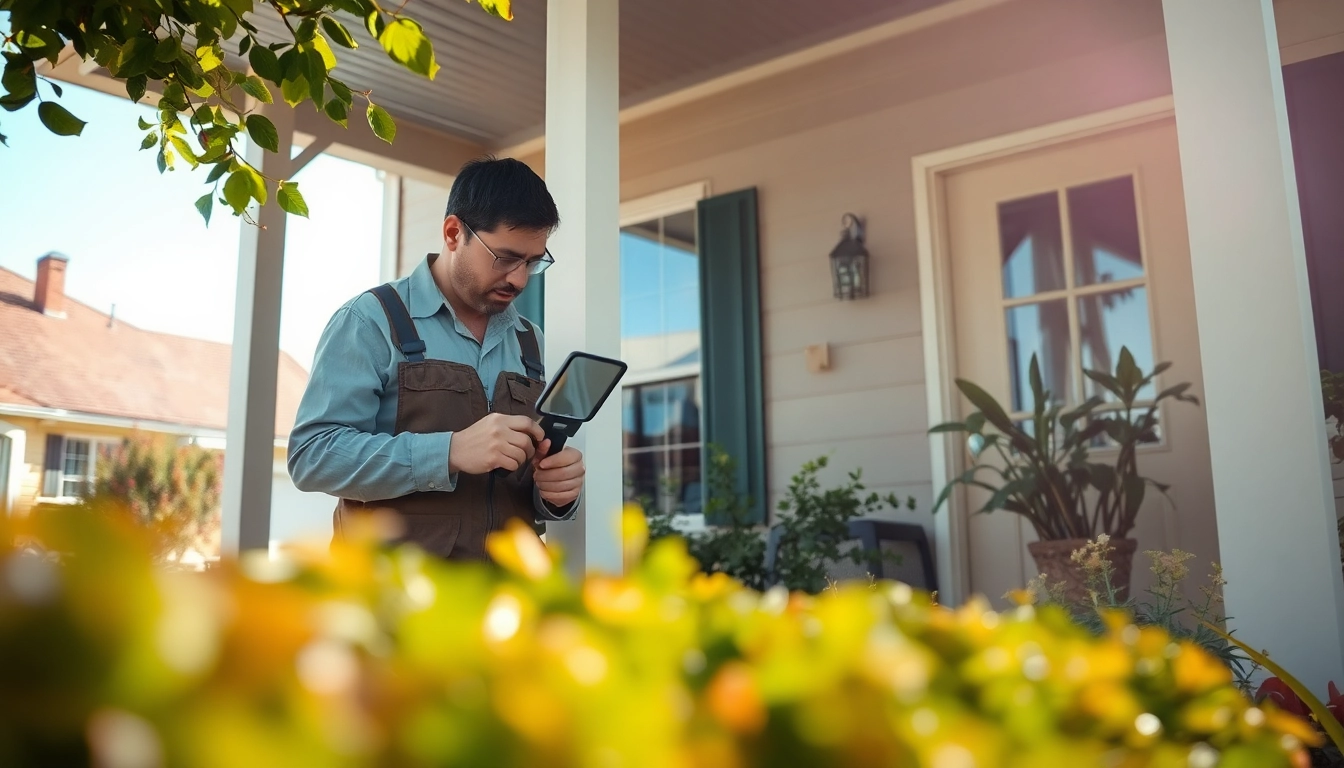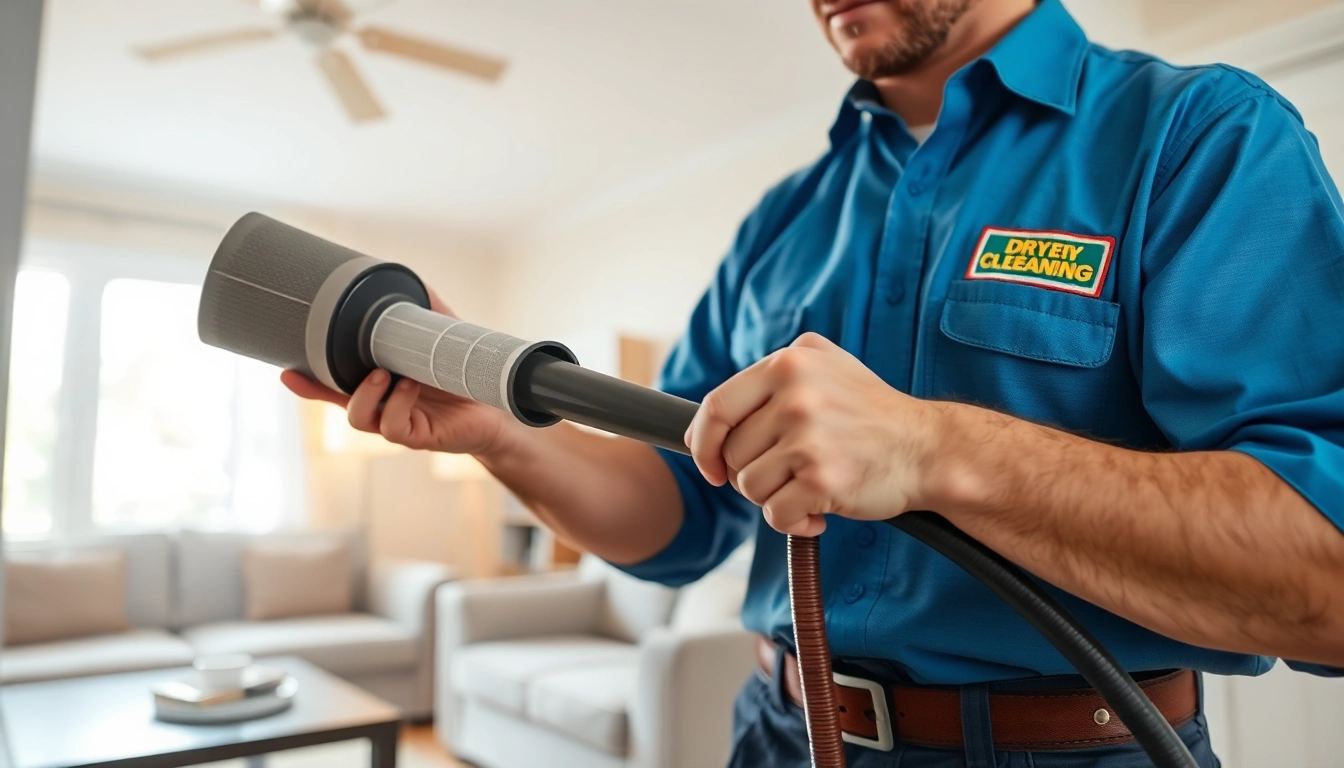Understanding Pest Management
Pest management is a critical aspect of maintaining health and safety in both residential and commercial environments. It encompasses a wide range of practices and strategies designed to control pest populations and minimize their impact. Effective pest management is not just about eradication; it involves understanding the ecological relationships between pests and their environment. This holistic approach ensures the safety of non-target species, including humans and pets. Pest management practices can vary significantly depending on the nature of the infestation and the specific environments in which they occur.
What is Pest Management?
Pest management involves the regulation, prevention, and elimination of pests—organisms that can cause health issues or damage to property. These pests can range from insects, rodents, and weeds to fungi and diseases that affect plants. Pest management is often implemented through a combination of various strategies, aiming for a holistic approach that is sustainable and effective. This includes understanding pest biology, behavior, and the ecosystem they inhabit, which is fundamental to developing effective management strategies.
The Importance of Integrated Pest Management
Integrated Pest Management (IPM) is a strategic approach advocated by many environmental and governmental organizations. It combines biological, cultural, physical, and chemical tools to manage pests effectively while reducing risks to human health and the environment. The practice of IPM emphasizes long-term prevention over immediate control, making it a valuable resource for pest management.
According to the United States Environmental Protection Agency, IPM can lead to successful yields and sustainability for agricultural practices by using a variety of methods tailored to specific situations. Resources such as those from the [University of California](https://ipm.ucanr.edu/what-is-ipm/) and the [US EPA](https://www.epa.gov/safepestcontrol/integrated-pest-management-ipm-principles) provide detailed guidance on implementing effective IPM strategies.
Common Pests and Their Impact
Understanding common pests and their behaviors is critical for effective management. Some of the most pervasive pests include:
- Rats and Mice: These rodents can cause structural damage and spread diseases.
- Ants: Often attracted to food sources, they can contaminate products and cause havoc in kitchens.
- Termites: Known as ‘silent destroyers,’ termites can cause significant damage to wooden structures.
- Bed Bugs: These pests feed on human blood and can cause discomfort and sleeplessness.
- Fleas and Ticks: Commonly affecting pets, they can also impact humans, driving the need for treatment.
Each of these pests can have unique impacts, from damaging property to affecting human health, highlighting the need for an effective pest management strategy tailored to the specific situation.
Methods for Effective Pest Management
Preventive Measures for Homeowners
Prevention is often the first line of defense in pest management. Here are key preventive measures that homeowners can adopt:
- Seal Entry Points: Regularly inspect and seal cracks and crevices in walls, doors, and windows to eliminate entry points for pests.
- Maintain Cleanliness: Keep food stored properly, clean up spills promptly, and avoid leaving pet food out.
- Yard Maintenance: Trim trees and shrubs away from the house, and keep gutters clear to prevent pest habitats.
- Regular Inspections: Stay vigilant for signs of pest infestations, which can include droppings, nests, and damage.
These proactive practices can significantly reduce the likelihood of pests establishing themselves in your home.
Professional Pest Management Solutions
Despite best efforts, infestations may arise, making professional pest management an important resource. Professional services often utilize the following methods:
- Inspection: Detailed inspections help determine the type and extent of the infestation.
- Treatment Plans: Customized treatment plans can include chemical treatments, traps, and other methods effective for specific pests.
- Follow-Up Services: Ongoing monitoring and follow-up services help ensure that infestations are effectively managed and prevented from returning.
By working with trained professionals, homeowners can ensure that pest issues are resolved effectively and with minimal impact on the environment.
Integrated Pest Management Techniques
Incorporating IPM techniques into pest management strategies can enhance their effectiveness. Some common IPM techniques include:
- Biological Control: Utilizing natural predators or parasites to control pest populations.
- Cultural Control: Changing farming or gardening practices to prevent pest establishment, such as rotating crops and planting pest-resistant varieties.
- Mechanical Control: Employing traps, barriers, and other physical methods to manage pests.
- Chemical Control: When necessary, using pesticides judiciously to avoid harm to non-target organisms and promote safe application.
By applying these techniques judiciously, pest management can be more effective and sustainable, reducing the need for harmful chemicals and preserving ecological balance.
Choosing the Right Pest Management Provider
Assessing Qualifications and Experience
When selecting a pest management provider, it is important to evaluate their qualifications and experience. Consider the following:
- Licensing: Ensure the company is licensed and certified to operate in your area, complying with local and national regulations.
- Experience: Ask about the company’s experience with the specific pests you are facing and their overall track record in the industry.
- Certifications: Look for additional training or certifications in pest management methodologies, particularly in IPM.
These factors can significantly impact the quality and effectiveness of pest control services.
Questions to Ask Potential Pest Management Companies
Before hiring a pest management company, consider asking the following questions:
- What types of pests do you specialize in?
- What methods do you use for pest management, and are they environmentally friendly?
- Can you provide references from previous clients?
- What is included in your service agreement?
These questions can help clarify the company’s approach and ensure that your pest management needs will be effectively addressed.
Understanding Service Agreements
A clear service agreement is essential for understanding the pest management process. It should include:
- The scope of services provided and any guarantees offered.
- Payment terms and the frequency of services.
- Emergency policies for treatment outside of scheduled visits.
Having a detailed agreement can prevent misunderstandings and ensure comprehensive service throughout your pest management journey.
Cost Factors in Pest Management
Average Costs for Pest Management Services
The cost of pest management services can vary significantly based on factors such as the type of pest, the size of the infestation, and the geography of your location. On average, homeowners spend between $100 to $300 for a standard service call. More extensive treatments for difficult infestations could range from $300 to over $1,000. Understanding the expected costs can help homeowners budget effectively for pest management services.
Factors Affecting Pest Management Pricing
Several factors contribute to the pricing of pest management services:
- Type of Pest: Some pests require more intensive management techniques and time, increasing overall costs.
- Severity of Infestation: More significant infestations typically require extensive labor and multiple visits, raising costs.
- Geographical Location: Service rates can vary widely based on regional demand and local regulations.
Understanding these factors can help consumers gauge the appropriateness of proposed service costs from pest management companies.
Long-Term Value of Effective Pest Management
Investing in effective pest management strategies can provide long-term benefits that far exceed the initial costs. Some of these benefits include:
- Reduced risk of property damage, which can save homeowners significant repair costs.
- Improved health and hygiene in living environments, minimizing the spread of diseases associated with pests.
- Increased peace of mind, knowing that your home or business is protected from unwanted infestations.
By prioritizing effective pest management, homeowners and business operators can safeguard their investments and maintain a healthier environment.
Evaluating Pest Management Effectiveness
Monitoring and Reporting Results
Once pest management strategies are implemented, it is crucial to monitor their effectiveness over time. Regular inspections and reports from pest control companies can help assess whether the strategies in place are yielding the desired results. Keeping track of pest sightings, inspection outcomes, and changes in pest behavior can inform adjustments to management practices.
Adjusting Strategies Based on Outcomes
Evaluating pest management effectiveness offers opportunities for improvement. If an issue persists, strategies may need adjustments, such as:
- Changing treatment methods or materials when current methods are ineffective.
- Increasing the frequency of inspections and treatments if pest activity continues.
- Enhancing preventive measures to reduce the risk of new infestations.
Flexibility in strategy development ensures that pest management can continually adapt to changing situations.
Continual Learning in Pest Management Best Practices
Pest management is an evolving field, with ongoing research leading to new understanding and techniques. Professionals should stay informed on:
- Emerging pests and pest behaviors.
- Innovative pest management strategies, including eco-friendly options.
- Regulatory changes impacting pest control practices.
Commitment to continual learning and professional development can enhance the effectiveness of pest management efforts and promote better outcomes for clients.




